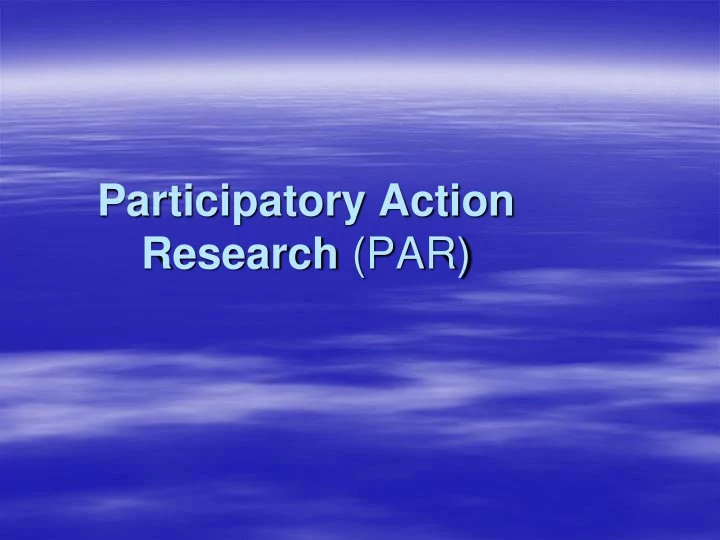

Participatory Action Research (PAR)
PARTICIPATION & KNOWLEDGE Knowledge as a basis for decision- making When people involved in decision making don’t possess adequate knowledge, they are helpless participants in decision making process.
RELIABLE KNOWLEDGE The knowledge - incomplete, uncertain and even intentionally distorted A tendency of increasing the non-knowledge and ignorance. The public at large, including the poor people are not professional producers of knowledge and they cannot identify existing distortions.
W hat’s the solution? To involve the poor people (and other groups also) in the very process of knowledge production Participatory action research – using a scientific approach to study important social problems together with people experiencing them. New knowledge contributing to practical solutions of immediate problems and general knowledge, including theories Alliance between professional researchers and people that are not professionals
HOW? The classical model of PAR has several main elements (or characteristics) Ordinary members can generate valid knowledge as partners in a systematic empirical inquiry. “Problem owners” are considered as insiders; researchers – more or less, as outsiders Insiders’ own cognitive map or local theory can be as legitimate and as useful in scientific investigation as that of the researcher. Since PAR begins with the problematic situation, the traditional theory – practice sequence is reversed. In this way those who define the problems (decide what is problem and what is not) play a key role in the research.
HOW? Using the “tacit knowledge”, local knowledge (theory), “non - scientific” knowledge and moral values of people experiencing the problems; Problem definition is not limited to the concepts, theories etc. of a particular discipline, but rather is grounded in the participant’s definition of the context. PAR generates a vision of how society, or local community, or organization could be improved. It is about change that has positive social value. The “Southern” and “Northern” traditions
Example: “Creating Networks for Rural Economic Development in Norway” (phases)
Do we (NN) need such instrument? Participatory research as a tool for influence and participation (perhaps we don’t possess better tool); Other possible gains – way for involvement of the poor people;
What we (NN) can do in order to develop large practical implementation of the method at national and European level? What are the barriers? Proposals for further activities?
Recommend
More recommend